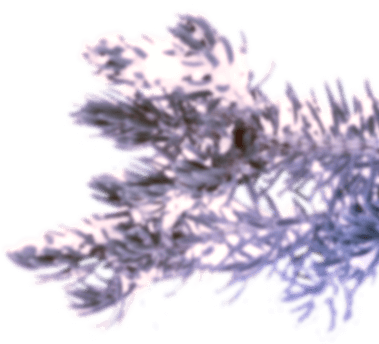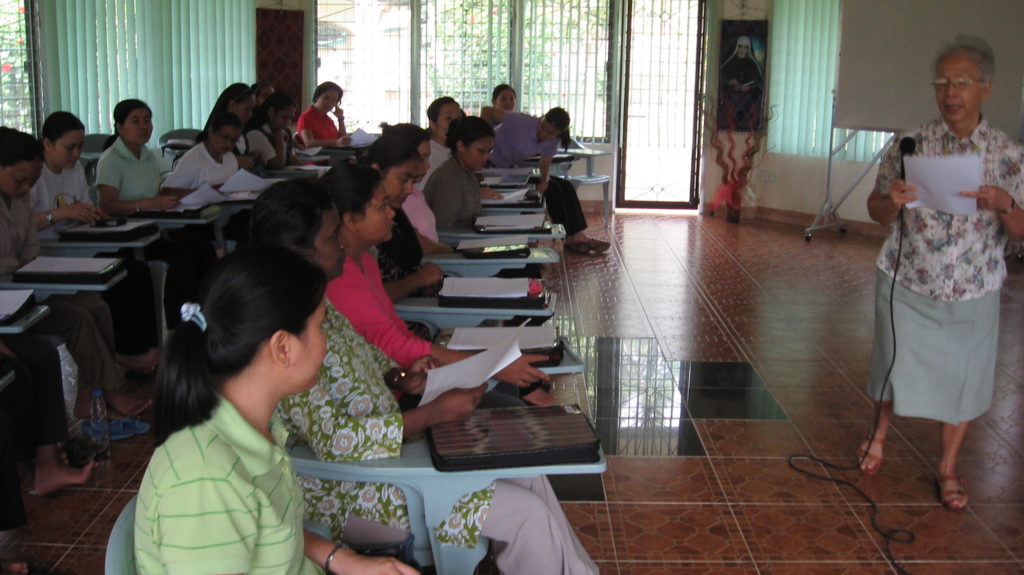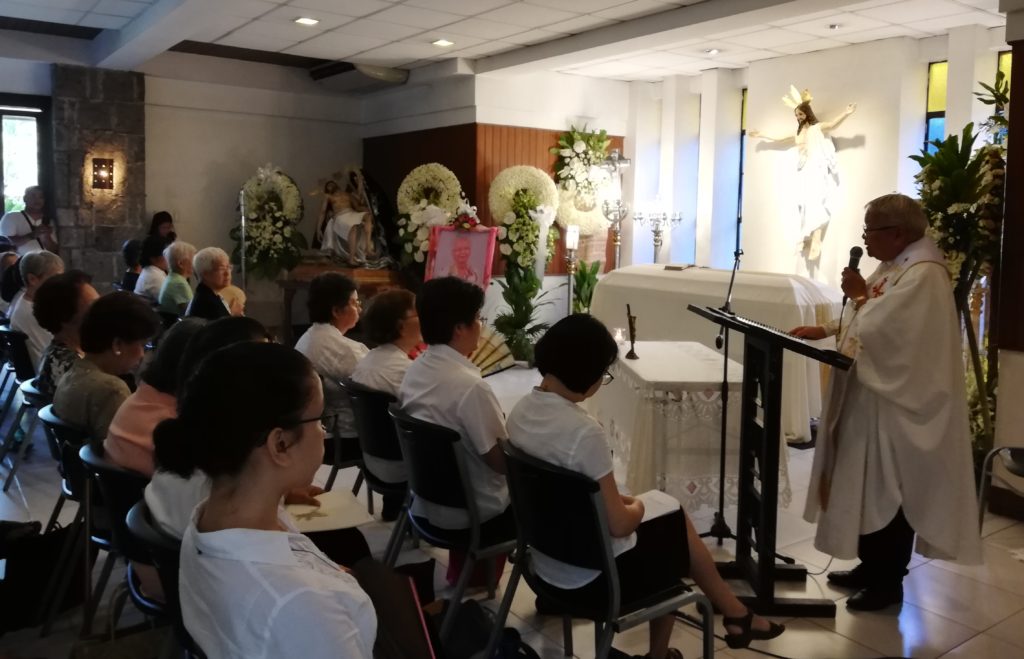May 07., 2019 / Homilies, News & Announcements
With tears in our eyes but Joy in our hearts
Homily for Sr. Guia’s Funeral on May 6, 2019, Quezon City, Philippines, by Fr. Edmundo M. Martinez:
.. There are tears in our eyes, but joy in our hearts as we bid goodbye to Sr. Guia.
Guia’s work and the work of the Cenacle concern the spiritual life. Self-awareness is the experience of spirit. When we sometimes say, I know
what I feel but I cannot express it, we are referring to the experience of being self-aware of ourselves as being angry or puzzled or exuberant, but cannot put it into words. Because the experience itself involves no words, no images, no pictures: it is immediate, it is immaterial, it is spiritual.
Now while all who are alive are aware, not everyone is self-aware. I can listen to the stories
of the successes of another, see the proofs of that success—the fine clothes, the expensive
cars, the magnificent palaces. When I hear and see these things, I am aware of what my
senses and imagination perceive. What I may not be self-aware of is that as I hear and see
these things, there is within me a complex experience of envy and admiration, jealousy and
regret, frustration and despair. So long as I am awake, I am aware of things around me. I am
even aware of myself when I talk about myself. But talking about myself is not self-
awareness. Self-awareness is the awareness of the subject doing the talking (Bernard
Lonergan). When I talk about myself, I am aware of what I am saying. But perhaps I may also
be self-aware that I am talking about myself a little too grandly. That shameful experience of
lying to build myself up, even as I speak, is self-awareness. To be self-aware is to be aware of
myself in the very same moment that I am aware of what I see, or hear, or do. I cannot
speak about it, I can only experience it. It cannot be captured by words; it can only be lived.
It is immaterial. To be self-aware is to be spirit in the world (Karl Rahner).
Now Sr.Guia’s lifetime work is to direct, and guide, and encourage individuals to grow in self-awareness, and indeed to grow in the self-awareness of God who dwells in each one of us. To discover the Father who created us to his own image (Gen 1:27); to know the Son who promised to dwell in us,(John 14: 20);to be familiar with the Spirit who has been given to us by whom we cry, “Abba, Father” (Rom 8:15 and 1 John 4:13)—that is the task of spiritual direction to which Sr. Guia dedicated herself. It is to cut through the distractions and vanities of the world to guide the person to the stillness of her self-awareness. The quiet of that self-awareness, that prayerful presence to one’s self, is the favorable 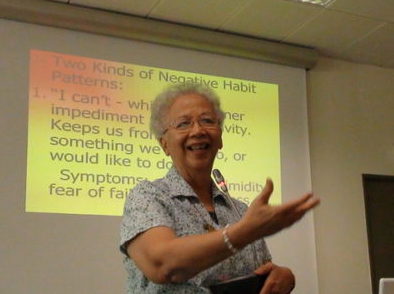 condition by which the person may discover the God within who is more intimate to her than she is to herself (St. Augustine); to recognize the Lord, and to become familiar with the ways of the Spirit so that slowly she becomes a new creation and begins to see herself, her life, and her world with the new eyes of faith. These new eyes of faith reveal a beautiful world despite the ugliness of sin, because it is a world being redeemed by the body of Christ; it is a world vibrant with life, because it is animated by the Spirit; it is a world filled with hope in its groaning, because it is heading inexorably towards the kingship of Christ; above all, it is a world in which the person now has a unique and vital role to play, a mission and purpose in life. All the struggles in life, all the strivings and dissatisfactions, all the yearnings and disappointments are now seen in a new perspective: they are our longing for God, they are God leading us to himself. As St. Augustine succinctly put it: “Thou hast made us for thyself; our hearts are restless until it rests in You.”
condition by which the person may discover the God within who is more intimate to her than she is to herself (St. Augustine); to recognize the Lord, and to become familiar with the ways of the Spirit so that slowly she becomes a new creation and begins to see herself, her life, and her world with the new eyes of faith. These new eyes of faith reveal a beautiful world despite the ugliness of sin, because it is a world being redeemed by the body of Christ; it is a world vibrant with life, because it is animated by the Spirit; it is a world filled with hope in its groaning, because it is heading inexorably towards the kingship of Christ; above all, it is a world in which the person now has a unique and vital role to play, a mission and purpose in life. All the struggles in life, all the strivings and dissatisfactions, all the yearnings and disappointments are now seen in a new perspective: they are our longing for God, they are God leading us to himself. As St. Augustine succinctly put it: “Thou hast made us for thyself; our hearts are restless until it rests in You.”
And the more the individual becomes self-aware of God’s presence in her life, the more she gains the freedom of the children of God, and then Sr. Guia’s work recedes to the background, for now it is the Spirit Himself—or Herself–that guides the person, a member fully alive in the body of Christ.
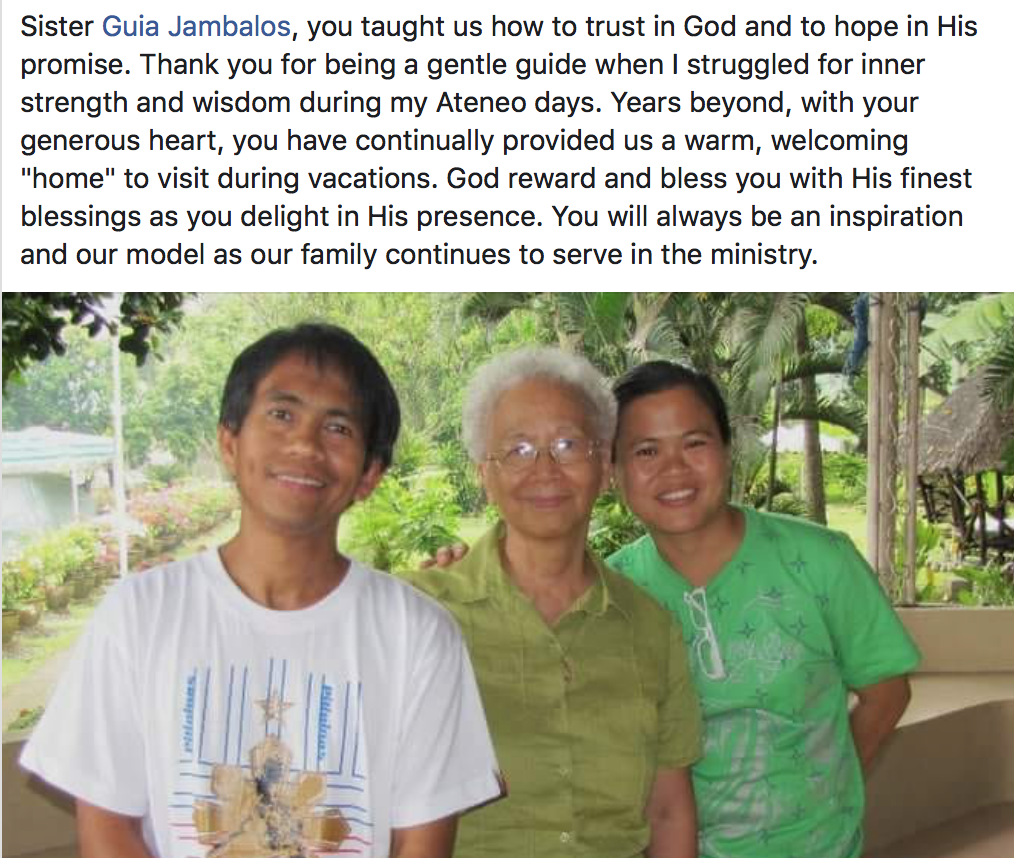 To be a spiritual guide that Sr. Guia was is a sanctifying and privileged vocation. Because to be good at it —and Sr. Guia was good at it—requires that one has traveled and continues to travel the road to which one guides the other person. One cannot guide another to holiness without herself being holy. And one can only be holy by making others holy. And so, her work was sanctifying: even as she brought others closer to God, she herself came closer to God. But is also privileged, because as one comes closer to God in self-awareness, one realizes that it is all God’s work, that all is grace. It is the Spirit within that is at work, and one is merely an earthen vessel.
To be a spiritual guide that Sr. Guia was is a sanctifying and privileged vocation. Because to be good at it —and Sr. Guia was good at it—requires that one has traveled and continues to travel the road to which one guides the other person. One cannot guide another to holiness without herself being holy. And one can only be holy by making others holy. And so, her work was sanctifying: even as she brought others closer to God, she herself came closer to God. But is also privileged, because as one comes closer to God in self-awareness, one realizes that it is all God’s work, that all is grace. It is the Spirit within that is at work, and one is merely an earthen vessel.
And now this earthen vessel has come to its point of obsolescence, and we bid goodbye to Sr. Guia. But this earthen vessel—this corruptible body—has served its purpose well. Just as Christ’s body was the instrument of his total love and obedience to the Father, so also, Guia’s body that we now return to the earth, has been the instrument of her loving God and guiding others to love God. And so we know that Guia’s body now buried corruptible, will rise, like Christ’s body, incorruptible.
The life of Guia has been a lifetime of longing for God and of doing his will. If one has longed for God all of one’s life, if one has followed his will through all the twists and turns of life, if one feels privileged to have been chosen to lead others to Him, would there be any hesitation, or sadness, or fear when one knows that just beyond the door of death, the Father who has loved you, the Son who died for you, and the Spirit who brought life and joy and hope to your earthly life—in short, the God who has loved you all your life, and the God whom you longed for all your life—waits for you on the other side?
And so, as we bid goodbye to Sr. Guia. There are tears in our eyes, but joy in our hearts.








